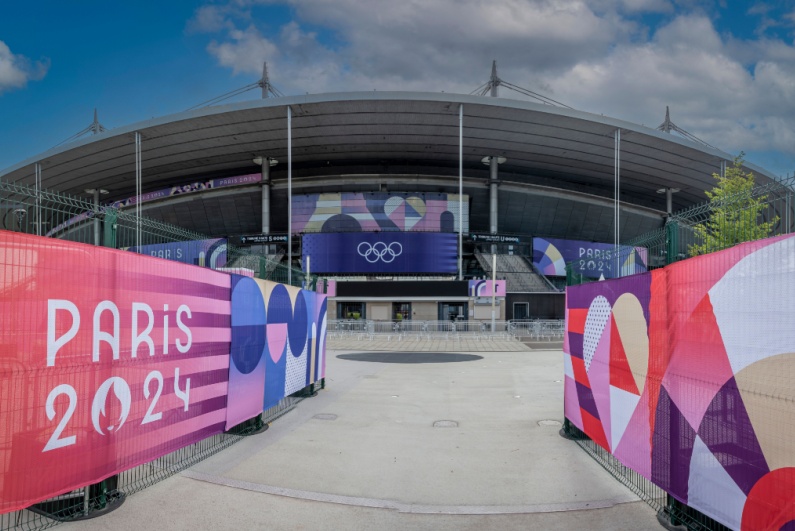Drama at the medal table
Betting on the Olympics is now commonplace, and gambling on the country to win the medal table outright is one of the most popular options. However, the Olympics medal table comes with caveats galore because, quite simply, the competing nations come in all shapes and sizes.
The biggest team in Paris 2024 comes from the USA, providing 594 of the 10,500 competitors. At the opposite end of the spectrum, Belize, Liechtenstein, Nauru, and Somalia have sent just one athlete each to the Games.
As ever with the Olympics, this is not straightforward. Officially, athletes don’t compete as countries but instead as members of their respective National Olympic Committee (NOC). In 2024, 206 NOCs are participating in the games.
When a table leader is not a table leader
This is further complicated by athletes from countries who are banned from Paris 2024 – including Russia and Belarus (for obvious reasons) – competing as Individual Neutral Athletes (INU) under what’s known as the neutral flag. In addition, 37 athletes are competing in Paris as part of the Refugee Olympic Team.
A truer measure of how successful a country has been in producing athletes who have reached the Olympic qualifying standard is ‘athletes per million of population’ – a table in which Slovenia is top with 42.9, followed by New Zealand (37.8), Ireland (25.4), and Jamaica (22.3).
common convention is for NOCs to be ranked by the number of gold medals won
The complications don’t end there. How the medal table is presented and interpreted has also become a point of contention. The common convention is for NOCs to be ranked by the number of gold medals won, then by silver to separate countries with the same number of golds, and then by the number of bronzes when the numbers of silvers are tied.
Given that this is how it’s presented on the website of the International Olympic Committee (IOC), it’s become the ‘official’ method. Yet some countries – namely those for whom it’s advantageous – have opted to present the table based on the cumulative numbers of medals won, regardless of color.
The USA has won the most
At the time of writing, the USA has won the most medals this year, and so, among others, the Washington Post, ESPN, and NBC have all adopted the total-number-of-medals approach when presenting the medal table. The New York Times has adopted a hybrid system of showing both the total medals and a gold-first tally in tandem.
the Americans have topped the medal table in 18 of the 29 Modern Games
The USA’s modest gold total so far in Paris hasn’t been particularly well received stateside, hence the need to be ‘creative’ with its presentation. This is especially relevant given the Americans have topped the conventional medal table in 18 of the 29 Modern Games.
The nation are also top of the overall medal table for the Modern Games (including both winter and summer Olympics) with 2,959 medals – 1,175 gold, 951 silver, and 833 bronze – ahead of Russia (2,011 in total), Germany (1,821), and Great Britain (950).
The rise and rise of China
Interestingly, not included in that top four is China, now considered one of the Games’ superpowers. The nation never topped the medal table until the 2008 Games in Beijing, where they finally hit the top spot with an incredible 48 golds.
For almost all of the 20th century, the Chinese were relatively small players in the Olympics – often sending teams that were modest in number – but since Beijing, they have been in the top three.
In Tokyo 2020 (which took place in 2021), the Chinese missed out on topping the medal table by just won gold medal; USA took the prize with 39 golds compared to China’s 38.
China’s gold standard
As things stand, at the start of Day Seven in Paris 2024, China heads the table with 11 golds (seven silver, six bronze), the USA breathing down China’s neck with nine golds (15 silver, 13 bronze).
Host France have performed spectacularly well so far – especially in the pool – and is third right now with eight golds (11 silver, eight bronze). The host nation is ahead of Australia, a team also very strong in the swimming events (the Aussies have also won eight golds but are behind France by virtue of winning six silver and four bronze).
Great Britain & Northern Ireland make up the top six with six gold (seven silver, seven bronze), just ahead of South Korea (a team also boasting six gold, but only three silver and three bronze).
As things stand, it looks certain to be a two-way battle at the top of the medal table between the USA and China. The current odds (with Bet365) are as follows:
- USA -333
- China +300
- France +20000
- Great Britain +25000
- Australia +25000
- Japan +30000
In truth, even at -333 to top the medal table, the USA offers decent value. While the nation is strong across the board, they particularly excel in track and field, which, ominously for the rest, starts on Day Seven.
their medal go-to events – badminton and table tennis – are still to come
The Chinese won’t go down without a fight though and, while they now appear capable of winning medals in sports previously seen as their weaknesses, like swimming, their medal go-to events – badminton and table tennis – are still to come.
Where is the value for bettors?
Of more interest to most bettors is trying to predict how many medals a country will win in Paris. To start with, the -188 on offer for the Americans to win over 40.5 golds looks exceptional value given that they won 39 in Tokyo.
Also well worth considering is the -120 on offer for Great Britain & Northern Ireland to win Under 62.5 medals in total in these Games. While they achieved 64 medals in Tokyo, they haven’t had the success in the pool they expected this time around, so may fall just short.
Another interesting one is Ireland, listed at -138 to win Over 7.5 medals in total. While the Irish only won four medals in Tokyo, they have taken a bigger team to Paris and have already picked up a gold (above) and two bronzes. Eight medals look well within their grasp.




